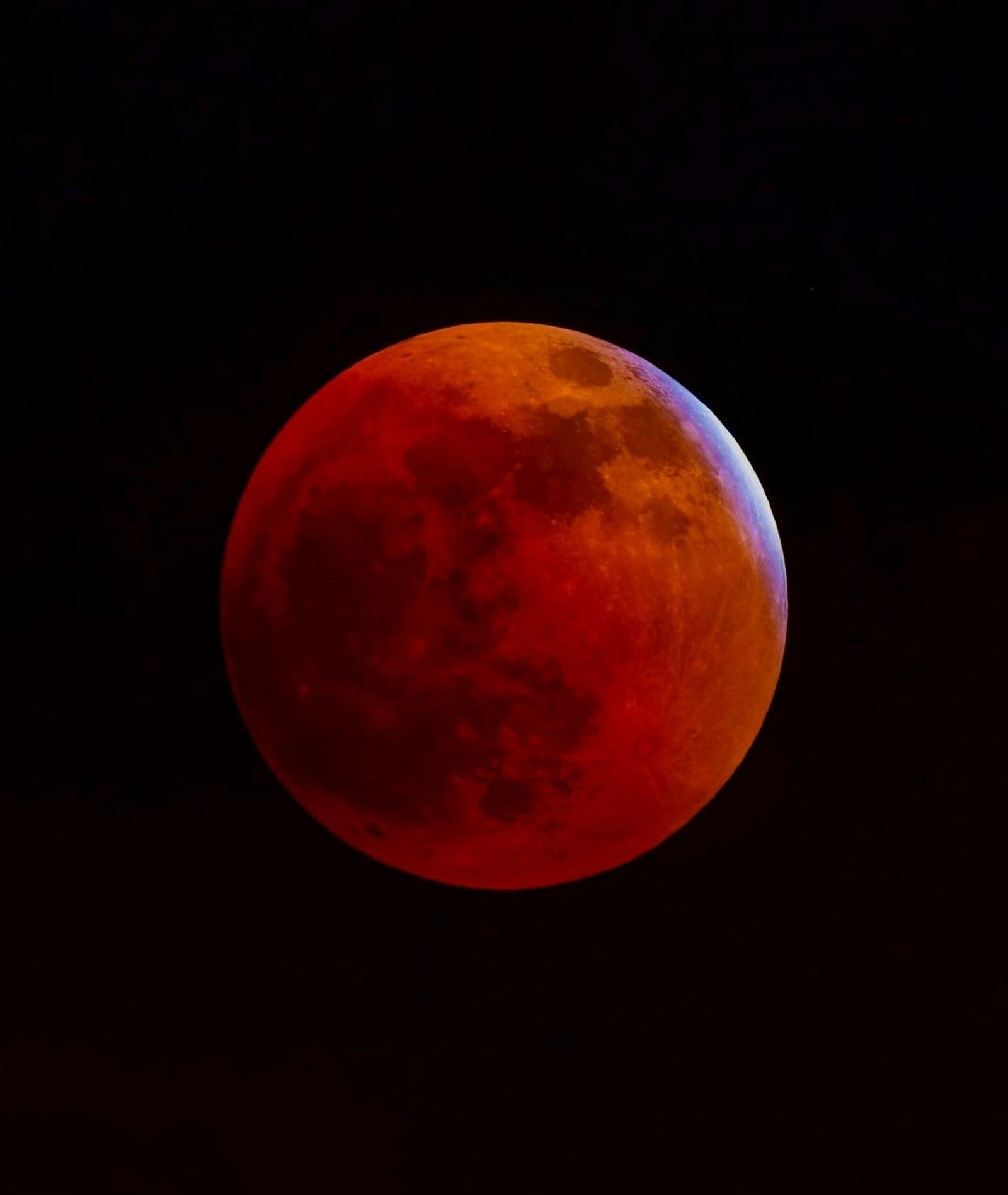The phenomenon occurs when the sun, Earth and the moon align perfectly with one another in a straight line.
As the moon passes through the darkest part of the Earth’s shadow – known as the umbra – it causes it to turn a deep, dark red colour, creating what is known as a blood moon.
Lunar eclipses are not always ‘total’ and for UK observers, a total eclipse hasn’t been visible since 2022, and won’t occur again until August 2026.
Here is everything you need to know in order to catch a glimpse this weekend.
When is the blood moon?
The eclipse will begin while the moon is still below the UK’s horizon.
This means that as it rises, it will already be in total eclipse. The Royal Observatory says the best time to see the blood moon is 7.33pm on Sunday.
It will continue to slowly move out of the Earth’s shadow until 9.55pm, giving stargazers in the UK approximately two hours and 22 minutes to see the eclipse.
Those in easternmost Africa, the Middle East, most of Asia, and western Australia will be able to witness the entire event from start to finish, while UK observers will catch the latter stages
What causes the red colour?
When the moon is in the Earth’s umbra, it does not get any direct sunlight, meaning only light that is refracted through Earth’s atmosphere manages to reach the moon.
Shorter blue wavelengths of light are typically scattered by the Earth’s atmosphere, leaving longer red wavelengths to pass through – hence the red tones of the moon.
The more dust or clouds in Earth’s atmosphere during the eclipse, the redder the moon appears, according to NASA.
This same atmospheric refraction effect is what causes sunsets and sunrises to look red.
How best to see it?
Unlike some celestial events, a blood moon can be seen with the naked eye, but astronomer Tom Kerss told the Royal Observatory some of his tips for how to improve your viewing experience:
• Know your horizon – the blood moon will be best for UK observers when the moon starts to rise in the west and southwest;
• Use a telescope to see details of the lunar surface;
• Tripods and or remote shutter lenses could help improve the quality of photographs.
In urban areas, people are encouraged to head to a hill or a high viewpoint to get the best view of the moon, which will appear low on the horizon line.
What is the weather going to be like?
According to the Met Office, much of England and Wales will see clear spells into the night, so you should have good viewing conditions.
But, the weather forecaster added, visibility is set to be poorer in parts of northern England and Scotland as they are expected to hold on to cloudier skies and outbreaks of heavy rain into the evening and overnight.On the off chance that you see up to the sky on Sunday, you might fair see a unusual celestial occasion – a add up to lunar overshadow.
The marvel happens when the sun, Soil and the moon adjust flawlessly with one another in a straight line.
As the moon passes through the darkest portion of the Earth’s shadow – known as the umbra – it causes it to turn a profound, dim ruddy colour, making what is known as a blood moon.
Lunar shrouds are not continuously ‘total’ and for UK eyewitnesses, a add up to obscure hasn’t been obvious since 2022, and won’t happen once more until Admirable 2026.
Here is everything you would like to know in arrange to capture a see this end of the week.
When is the blood moon?
The obscure will start whereas the moon is still below the UK’s skyline.
This implies that because it rises, it’ll as of now be in add up to obscure. The Royal Observatory says the most excellent time to see the blood moon is 7.33pm on Sunday.
It’ll proceed to gradually move out of the Earth’s shadow until 9.55pm, giving stargazers within the UK roughly two hours and 22 minutes to see the obscure.
Those in easternmost Africa, the Center East, most of Asia, and western Australia will be able to witness the whole occasion from start to wrap up, whereas UK spectators will capture the last mentioned stages
What causes the ruddy colour?
When the moon is within the Earth’s umbra, it does not get any coordinate daylight, meaning as it were light that’s refracted through Earth’s climate oversees to reach the moon.
Shorter blue wavelengths of light are ordinarily scattered by the Earth’s environment, clearing out longer ruddy wavelengths to pass through – subsequently the ruddy tones of the moon.
The more clean or clouds in Earth’s environment amid the overshadow, the redder the moon shows up, concurring to NASA.
This same climatic refraction impact is what causes nightfalls and dawns to see ruddy.
How best to see it?
Not at all like a few ethereal occasions, a blood moon can be seen with the exposed eye, but stargazer Tom Kerss told the Illustrious Observatory a few of his tips for how to move forward your seeing encounter:
⢠Know your skyline – the blood moon will be best for UK spectators when the moon begins to rise within the west and southwest;
⢠Utilize a telescope to see subtle elements of the lunar surface;
⢠Tripods and or farther screen focal points seem offer assistance move forward the quality of photos.
In urban zones, individuals are energized to head to a slope ora high viewpoint to urge the leading see of the moon, which can show up moo on the skyline line.
What is the climate attending to be like?
Agreeing to the Met Office, much of Britain and Grains will see clear spells into the night, so ought to have great seeing conditions.
But, the climate forecaster included, perceivability is set to be poorer in parts of northern Britain and Scotland as they are anticipated to hold on to cloudier skies and flare-ups of overwhelming rain into the evening and overnight















